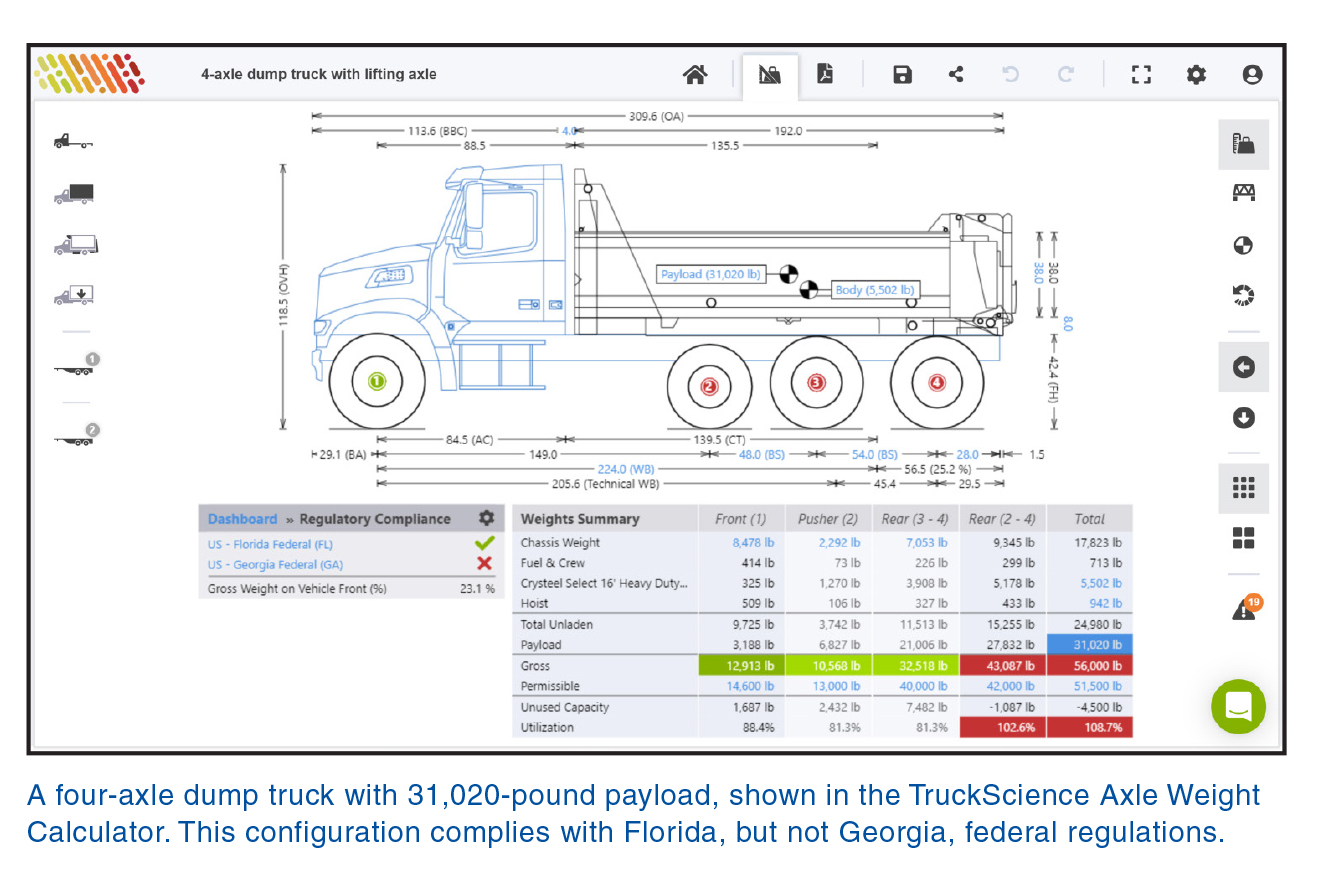The payload capacity of a dump truck that can legally carry over 31,000 pounds in Florida can drop by 4,500 pounds if it crosses into the neighboring state of Georgia.
The ability to market a work truck in multiple states presents a huge opportunity from a sales point of view. But how much payload can your vehicle legally carry as it moves from one state to another?
 As more state regulations take effect, there will inevitably be tradeoffs when it comes to truck carrying capacity. Some states have given exemptions to certain vehicle types to operate above standard federal truck size and weight limits, but this varies significantly by state.
As more state regulations take effect, there will inevitably be tradeoffs when it comes to truck carrying capacity. Some states have given exemptions to certain vehicle types to operate above standard federal truck size and weight limits, but this varies significantly by state.
Common ways in which states differ include bridge formula applied, axle limits, length and height, and whether or not lifting axles are recognized when calculating bridge limits.
TruckScience webinar
In a recent webinar (learn more at truckscience.com), we demonstrated a four-axle dump truck with lifting pusher axle could legally carry almost 30,000 pounds when operating under U.S. federal common size and weight regulations.
The same vehicle, when validated against Florida federal regulations, can carry over 31,000 pounds. But drive it across the border to Georgia, and based on the federal regulations there, its legal payload drops to less than 27,000 pounds.
In Georgia, a four-axle truck with lifting pusher axle is, in effect, considered to be a three-axle vehicle. Because federal regulations for the state of Georgia do not recognize lifting axles, the pusher axle is excluded from the overall bridge calculation. With only three axles being considered for the group, the permissible gross load of a vehicle with an outer bridge distance of 21 feet is limited to 51,500 pounds.
Therefore, the 6,500-pound payload gain, achieved by adding a pusher axle under U.S. federal common size and weight regulations, drops to just over 3,000 pounds in Georgia.
Complex regulatory landscape
Work trucks built in multiple stages and operating across various states are becoming more complex, requiring truck builders and fleets to have a greater understanding of the regulatory landscape across those states.
If a truck will be operated in more than one state, it’s important to take into account regulations of each applicable state during vehicle design.
While payload capacity may be compromised with each additional state, the safety and financial risks of noncompliance speak for themselves.
Axle Weight Calculator
It can be challenging to stay on top of Department of Transportation and Federal Motor Carrier Safety Administration regulations while managing all other business needs.
The TruckScience Axle Weight Calculator automatically validates your truck builds against regulations for each state, is backed by a library of pre-populated chassis specs, and calculates axle weight distribution, center of gravity and maximum payload.